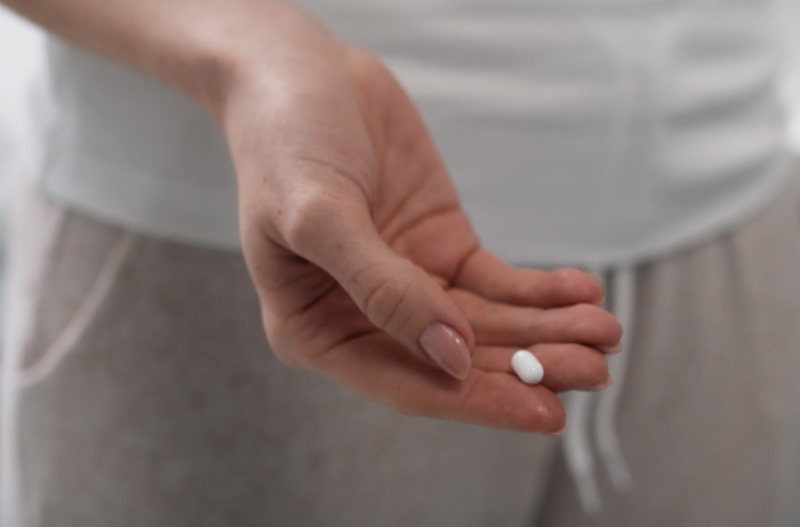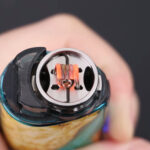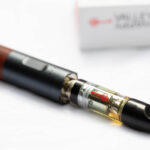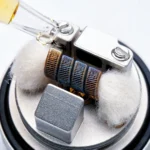In recent years, vaping has become increasingly popular, raising questions about its effects on various aspects of health, including lactation. The substances inhaled during vaping, such as nicotine and other chemicals, can potentially transfer to breast milk, posing risks to the nursing infant.
Understanding these risks and the necessary precautions is vital for mothers who vape and wish to continue breastfeeding safely. For mothers who vape, there’s an important consideration: the appropriate duration to wait before nursing their child post-vaping. We will analyze more about this topic in the following article.
The Effects on Breast Milk
These devices heat a liquid, often containing nicotine, flavorings, and other chemicals, creating an aerosol that the user inhales. As vaping becomes more prevalent, it’s crucial to understand its implications, particularly for breastfeeding mothers. The substances inhaled during this activity can potentially affect breast milk, an essential source of nutrition for infants.
The Transfer of Substances
The primary concern with vaping while breastfeeding is the transfer of harmful substances to the infant through breast milk. Nicotine, the most common substance in vapes, is known to pass into breast milk. Studies have shown that nicotine can accumulate in breast milk, even if it’s inhaled in vapor form.
This is not limited to nicotine alone; other components of the vape liquid, like propylene glycol and flavoring agents, may also find their way into breast milk. The extent of this transfer and its impact on the infant’s health are areas of ongoing research. However, the consensus among health professionals is that these substances can pose risks to a breastfeeding baby.
Potential Risks for the Baby
The exposure of infants to nicotine and other substances through breast milk is a significant concern. Nicotine can affect an infant’s developing brain and body. It may lead to changes in brain development, potentially affecting behavior and cognition later in life. Additionally, nicotine exposure can cause increased heart rate and agitation in infants.
Other chemicals in vape liquids are not well-studied in the context of breastfeeding, but their presence is a cause for caution. The long-term effects of these substances on infants are still being researched, but the potential for harm underscores the need for careful consideration by breastfeeding mothers who vape.
Guidelines for Safe Breastfeeding
The key lies in knowing the appropriate waiting period to minimize the risk of transferring harmful substances to the infant through breast milk. Health organizations and experts have developed guidelines to help navigate this complex issue, aiming to protect the health and well-being of both mother and child.
Recommended Waiting Times

While there is no universal consensus, several health authorities suggest waiting at least a few hours before nursing. This duration allows the body time to metabolize and reduce the levels of nicotine and other chemicals that might have been inhaled.
The exact waiting time can vary depending on factors such as the frequency of vaping, the concentration of nicotine in the vape liquid, and the individual’s metabolism. Some experts recommend waiting even longer, especially if using products with higher nicotine content, to ensure that the risk of exposure to the infant is minimized.
The study provided by Yvonne Stolworthy from HealthNews says that:
“Experts recommend breastfeeding your baby prior to vaping, which minimizes the amount of nicotine in your breast milk. You can time breastfeeding and modify the amount of nicotine you vape and how frequently.”
Additional Safety Tips
In addition to adhering to recommended waiting times, there are other safety measures that breastfeeding mothers who vape can consider:
- Reduce Vaping Frequency: Limiting the number of vaping sessions can decrease the overall exposure of harmful substances to the infant.
- Choose Lower Nicotine Options: Opting for vape liquids with lower or no nicotine concentrations can reduce the amount of nicotine transferred to breast milk.
- Consult Healthcare Providers: Regular consultations with healthcare professionals can provide personalized advice and support.
- Explore Alternatives: Seeking alternatives to vaping, such as nicotine replacement therapies that are considered safer during breastfeeding, can be a viable option.
- Maintain Good Hygiene: Washing hands and avoiding vaping near the baby can help reduce indirect exposure to vaping substances.
More About Nicotine and Other Chemicals in Vapes
Nicotine is a well-known substance found in most vaping products, recognized for its addictive properties and various effects on the human body. Alongside nicotine, vaping liquids often contain a range of other chemicals, including flavorings and propylene glycol.
These substances contribute to the overall experience of vaping but also raise concerns when it comes to breastfeeding mothers. Understanding the impact of these chemicals, particularly nicotine, on lactation and breast milk is essential for mothers who vape.
Impact on Lactation

Nicotine’s presence in breast milk has been a subject of study, with research indicating that it can affect both the quality and quantity of milk produced. Nicotine can potentially alter the composition of breast milk, affecting its nutritional and protective properties.
Moreover, it can influence the lactation process itself, potentially reducing milk supply. The impact extends beyond nicotine; other chemicals in vape liquids may also affect breast milk, though research in this area is less extensive. The potential for these substances to impact the developing infant’s health is a significant concern, warranting caution and careful consideration from breastfeeding mothers.
How to Minimize the Risks?
For mothers who are not able to quit vaping immediately, there are several considerations to keep in mind to minimize risks:
- Gradual Reduction: Gradually reducing vaping can help decrease the amount of nicotine and other chemicals.
- Timing of Vaping Sessions: Planning vaping sessions to align with longer intervals between breastfeeding can reduce the baby’s exposure to nicotine.
Are There Safer Alternatives?
The primary goal is to reduce or eliminate the exposure of harmful substances found in these products to the baby through breast milk. While the ideal scenario is quitting, there are other options that can be considered as transitional or supportive measures.
Nicotine Replacement Therapies (NRTs)

Nicotine Replacement Therapies (NRTs) are often suggested as a safer alternative for those trying to quit. These therapies include products like nicotine patches, gum, lozenges, inhalers, or nasal sprays. NRTs provide a controlled dose of nicotine to help manage withdrawal symptoms and cravings, reducing the urge to smoke or vape.
The advantage of NRTs over vaping is that they don’t contain the other harmful chemicals found in vape liquids. However, it’s important for breastfeeding mothers to consult with healthcare professionals before starting any NRT, as nicotine can still be passed to the infant.
Pharmaceutical Aids

Certain prescription medications can aid in quitting smoking or vaping. These medications work by reducing cravings and withdrawal symptoms. However, their suitability for breastfeeding mothers needs careful evaluation by healthcare professionals. The safety and potential effects of these medications on breast milk and the infant must be thoroughly assessed before considering this option.
Lifestyle Changes and Natural Remedies

Lifestyle changes, such as increasing physical activity, adopting a healthy diet, and practicing stress-reduction techniques like meditation or yoga, can also support the process of quitting vaping. Natural remedies, though less studied, might offer some benefit in managing cravings and withdrawal symptoms. These include herbal teas, acupuncture, and aromatherapy. However, it’s important to ensure that any natural remedies are safe for use during breastfeeding.
FAQs
Can using e-cigarettes affect my breast milk supply?
Yes, using e-cigarettes can potentially affect your breast milk supply. Nicotine, a common ingredient in e-cigarettes, is known to reduce serum prolactin levels, which can decrease milk production. However, the extent of this effect can vary based on individual factors and the frequency of e-cigarette use.
Are there specific flavors or types of e-liquids that are safer for breastfeeding mothers?
Currently, there is no evidence to suggest that certain flavors or types of e-liquids are safer for breastfeeding mothers. All e-liquids containing nicotine and other chemicals pose potential risks. It’s advisable to avoid all vaping products while breastfeeding.
If I can’t quit vaping immediately, what measures can I take to protect my baby?
If quitting vaping immediately isn’t feasible, consider reducing the frequency of vaping, choosing e-liquids with lower nicotine levels, and avoiding vaping just before breastfeeding. Always consult with a healthcare provider for personalized advice and possible nicotine replacement therapies.
Can vaping affect the nutritional content of my breast milk?
While the direct impact of vaping on the nutritional content of breast milk is not fully understood, the presence of harmful chemicals in e-cigarettes could potentially alter the milk’s composition. It’s best to avoid vaping to ensure the nutritional quality of your breast milk.
Is it safe to use nicotine patches or gum while breastfeeding as an alternative to vaping?
Nicotine patches and gum are generally considered safer alternatives to vaping during breastfeeding, as they don’t contain the additional harmful chemicals found in e-cigarettes. However, it’s important to consult with a healthcare provider before using any nicotine replacement therapy while breastfeeding.
How long does nicotine stay in my breast milk after vaping?
Nicotine levels in breast milk peak about 30 minutes to an hour after vaping and can remain detectable for several hours. The exact duration depends on factors like the amount of nicotine consumed and individual metabolism. It’s recommended to wait a few hours after vaping before breastfeeding to reduce the baby’s exposure to nicotine.
The Bottom Line
The presence of nicotine and other chemicals in e-cigarettes can pose risks to a breastfeeding baby, potentially affecting their development and well-being. While the research in this area is still evolving, the current evidence suggests that the safest approach for breastfeeding mothers is to abstain from vaping altogether.






